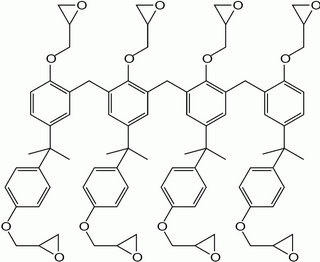Production process
| | This section needs expansion. You can help by adding to it. (January 2024) |

The tape casting process converts ceramic powder to a thin film by making a liquid form of it, casting it on a flat plane and drying it. [6] The process involves several key steps:
Preparation of the Slurry: The raw material, typically ceramic powder, is mixed with solvents, dispersants, binders, plasticizers, and other additives to form a uniformly dispersed and stable slurry. [6] [7]
Casting the Slurry: The slurry is then cast onto a flat surface using a tape casting machine. The machine spreads the slurry into a thin film of the required thickness. [7]
Drying: The cast film, known as the green tape, is dried to remove the solvents. This step is crucial to ensure the tape maintains its shape and integrity.
Cutting and Punching: The dried green tape is cut or punched into the desired shapes. This step is often used to create multilayer structures for electronic and energetic applications. [7]
Lamination: Multiple layers of green tape can be stacked and laminated together under specific conditions of temperature, pressure, and dwell time to form a cohesive structure.
Sintering: The laminated structure is then sintered at high temperatures to achieve the final desired properties, such as mechanical strength and electrical conductivity.
Different casting mechanisms, such as doctor blades, slot-die coaters, and micro gravure coaters, are used to achieve the desired thickness and surface quality of the tape.
Ingredients
The starting point for the tape casting process is the powder that the 'tape' is to be consisting of. This is the active component of the final product and the other contents, such as binder material and solvents have to be compatible with the powder. The powder is in general very fine, with maximum particle sizes of 5 micrometers. [8] The solvent serves the purpose of allowing the powder to be cast, as if it were a liquid, and also to spread secondary components through the tape. Surfactants are added as well, to control the behaviour of the tape surface. Furthermore, binder material is added. This determines the bulk structure and mechanical characteristics of the tape. [1]
Slurry manufacturing
Ceramic tape-casting slurries are complex systems composed of ceramic powder, solvent, and a number of organic components. [9] A ceramic slurry's different ingredients each have a different impact on the rheological behavior of the slurry. [10] The main ingredient in any slurry formulation is a powder; this is the only ingredient which determines the properties of a shaped material. [11]
Slurry casting

The slip material is transported in pipes from tanks to the casting machine. The slip may be filtered before being applied, to remove imperfect particles. The cast slurry is called a green layer or green sheet (this is not referring to the colour of the sheet), and needs further processing such as cutting and drying. [8]
During casting it is important to cast a perfectly flat surface without streaks, for this different casting mechanisms have been designed to minimise slip streams in the slurry. The blades that flatten and thin the cast surface are called doctor blades. These come in different shapes such as thick or thin flat cutting surfaces, rounded edges and knife blade-shaped edges. [1] For tapes that are cast thinner than 50 micrometer, the coating is not applied from the top, but from the side (slot-die coater) or bottom (lip coater and micro gravure coater).
The surface on which is cast can be made from steel, glass, coated paper and polymers. Steel is the most economical surface, but removal of thin sheets from a steel surface is difficult and the steel surface needs relatively frequent replacement due to damaging. [1]
Green sheet drying
The cast tape only dries from one side, the exposed surface, as the casting surface is impermeable. Drying is dependent on two processes, namely the evaporation of the solvent from the surface, and the diffusion of the solvent through the tape towards the single exposed surface. The evaporation may be sped up by applying air drying. However, usually evaporation should be limited to ensure steady diffusion of the solvent. If the solvent does not leave the sheet in a controlled fashion, the tape may crack or curl. [1]
Several processing steps may be executed depending on the product requirement, such as cutting, laminating, punching or thermal treatment. [12]












